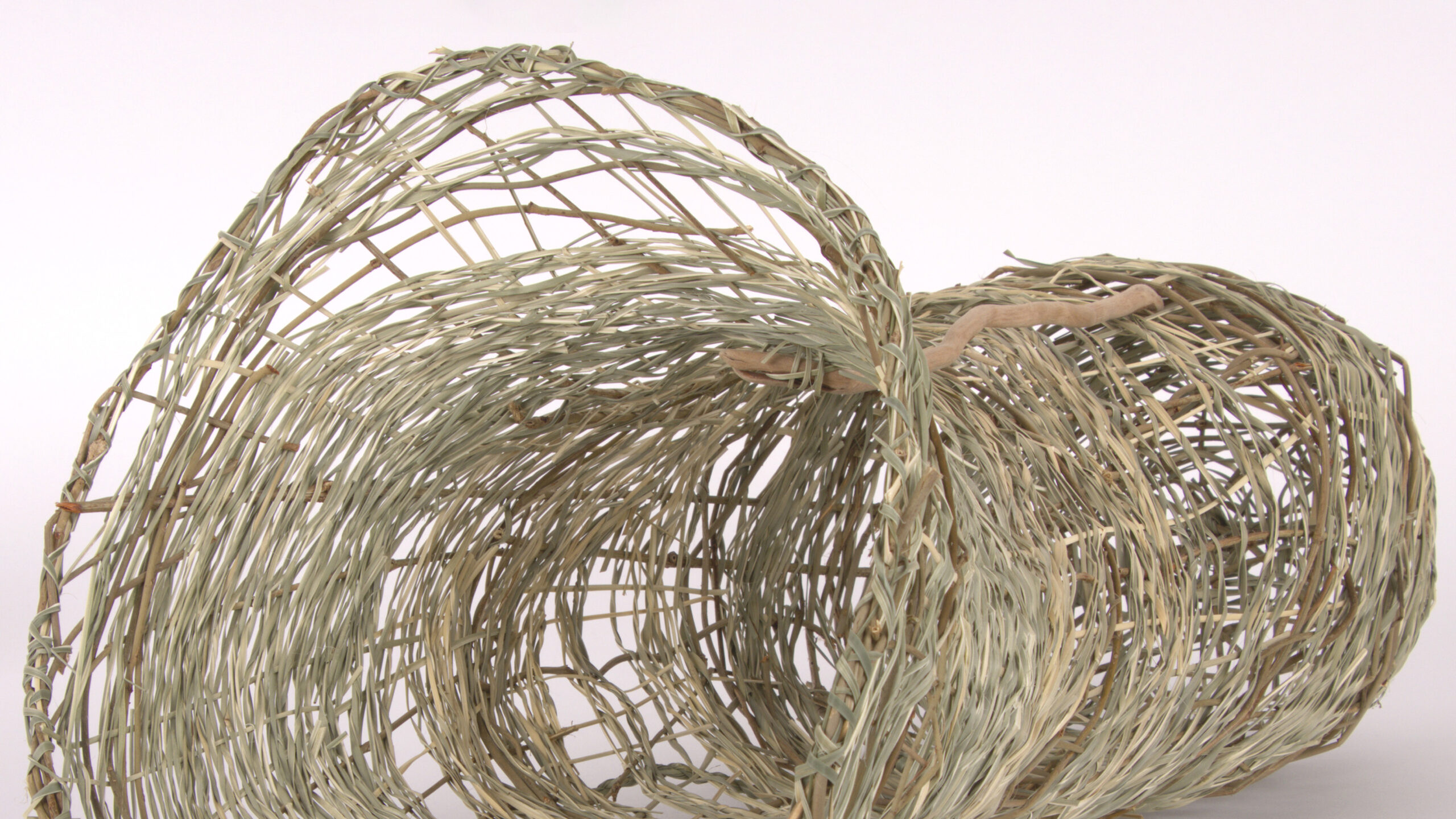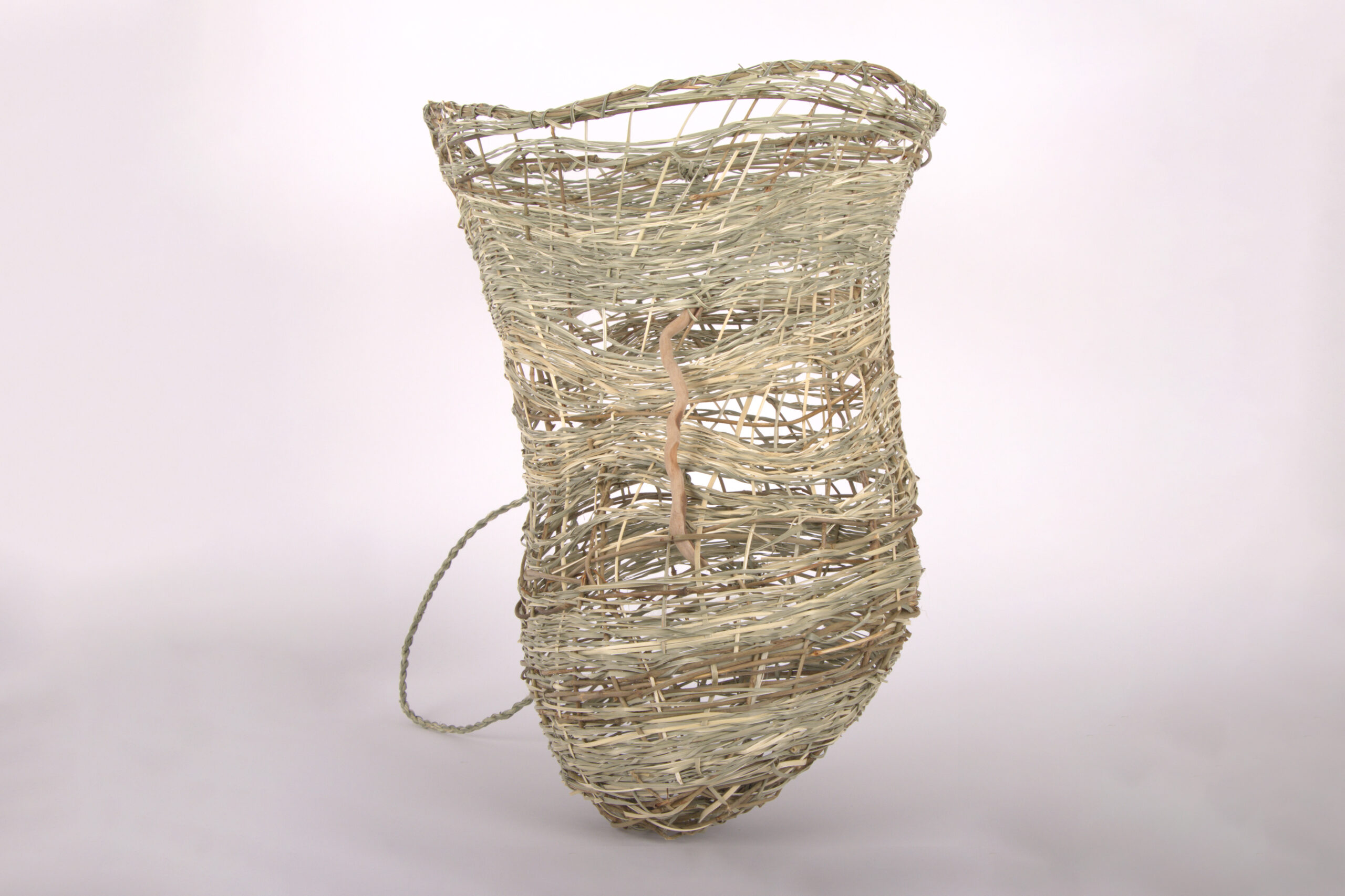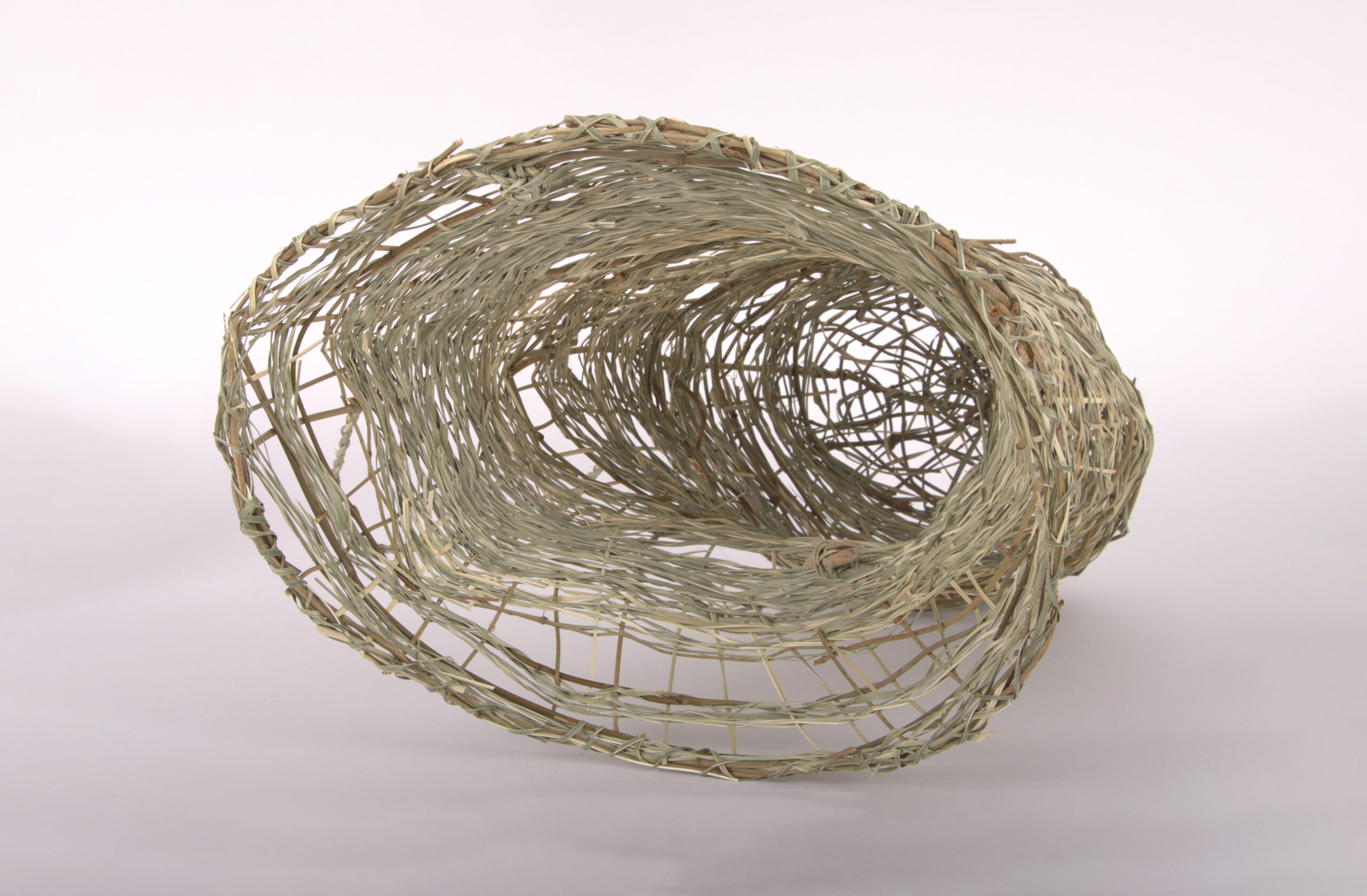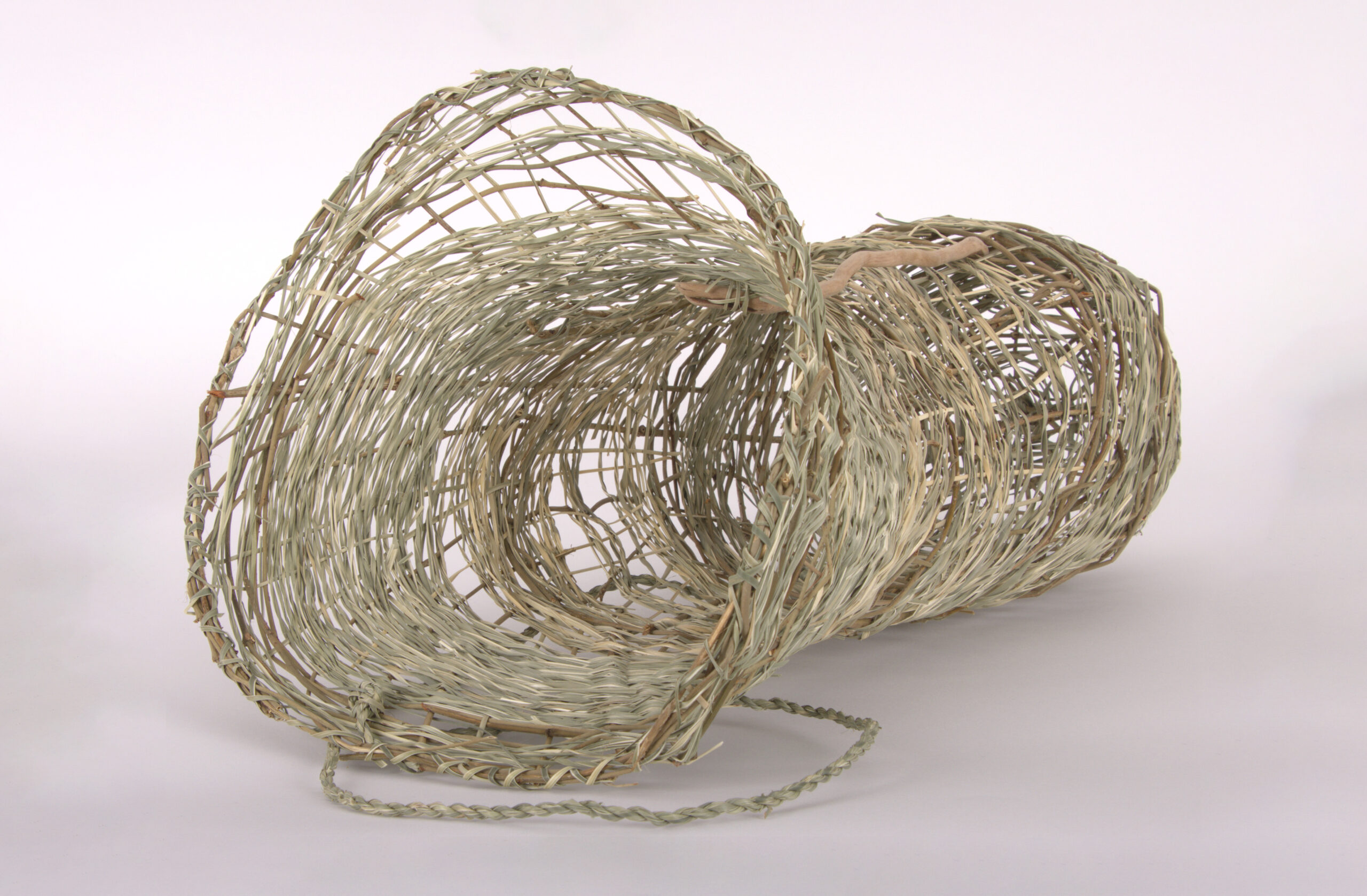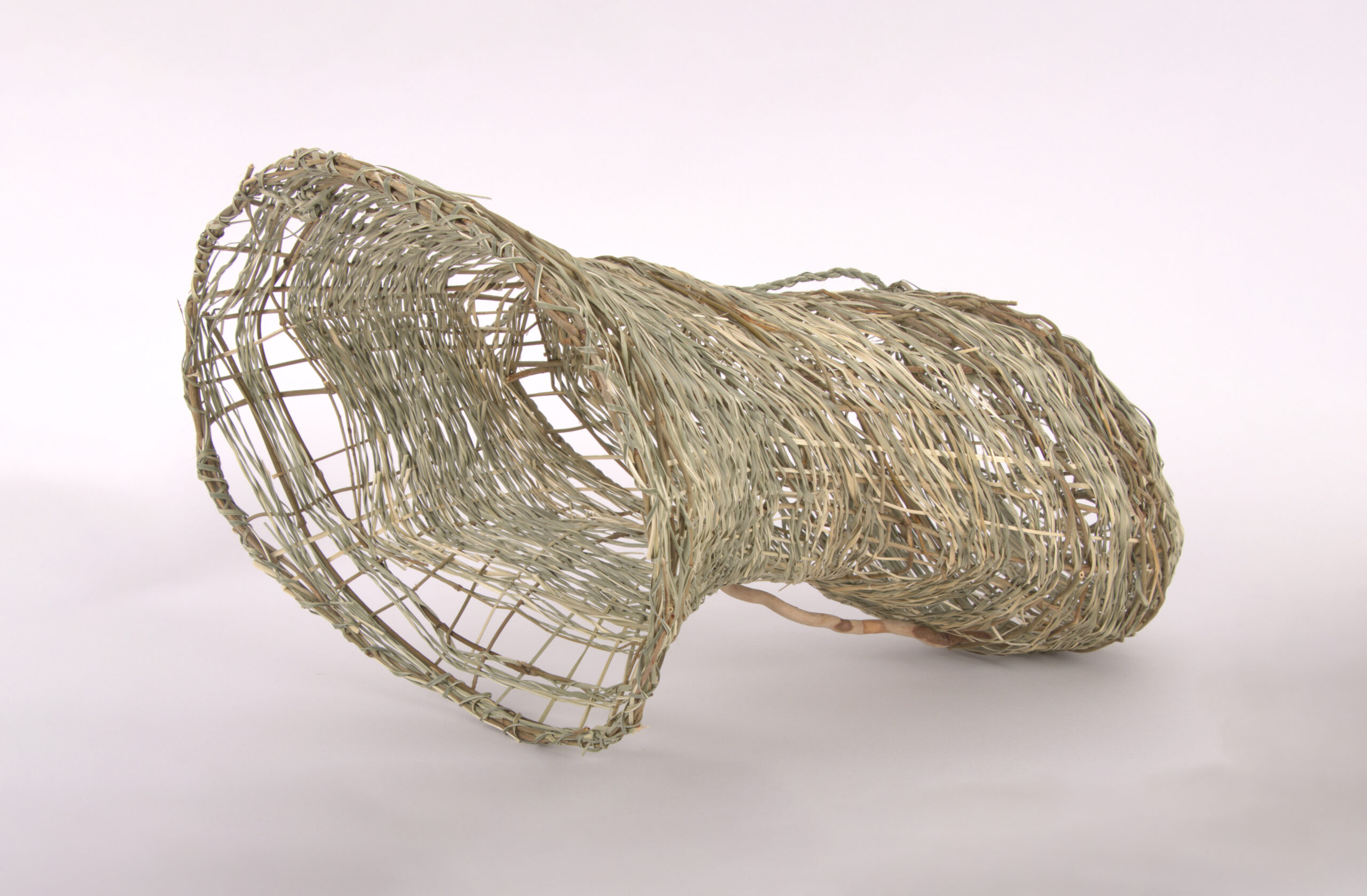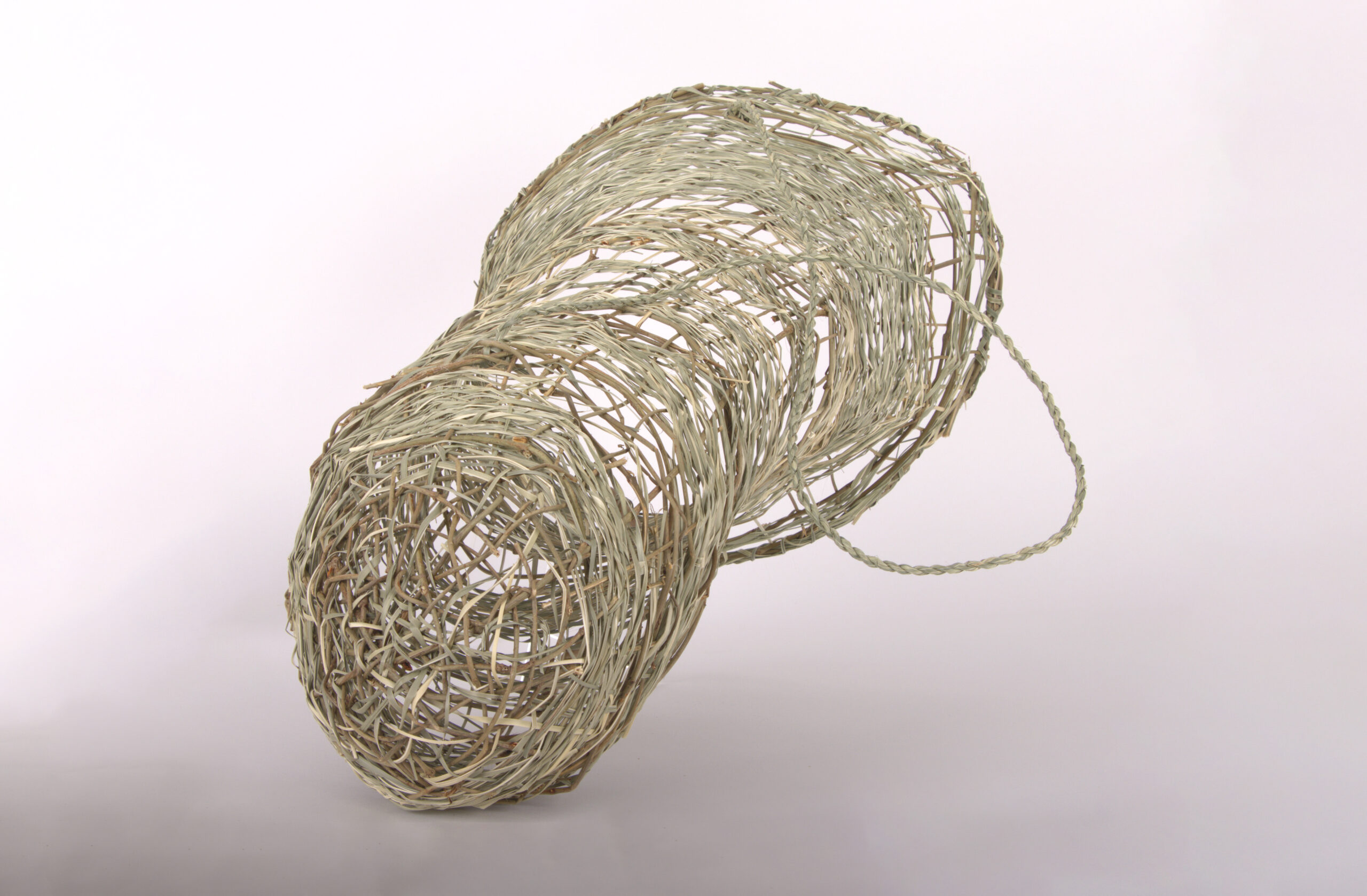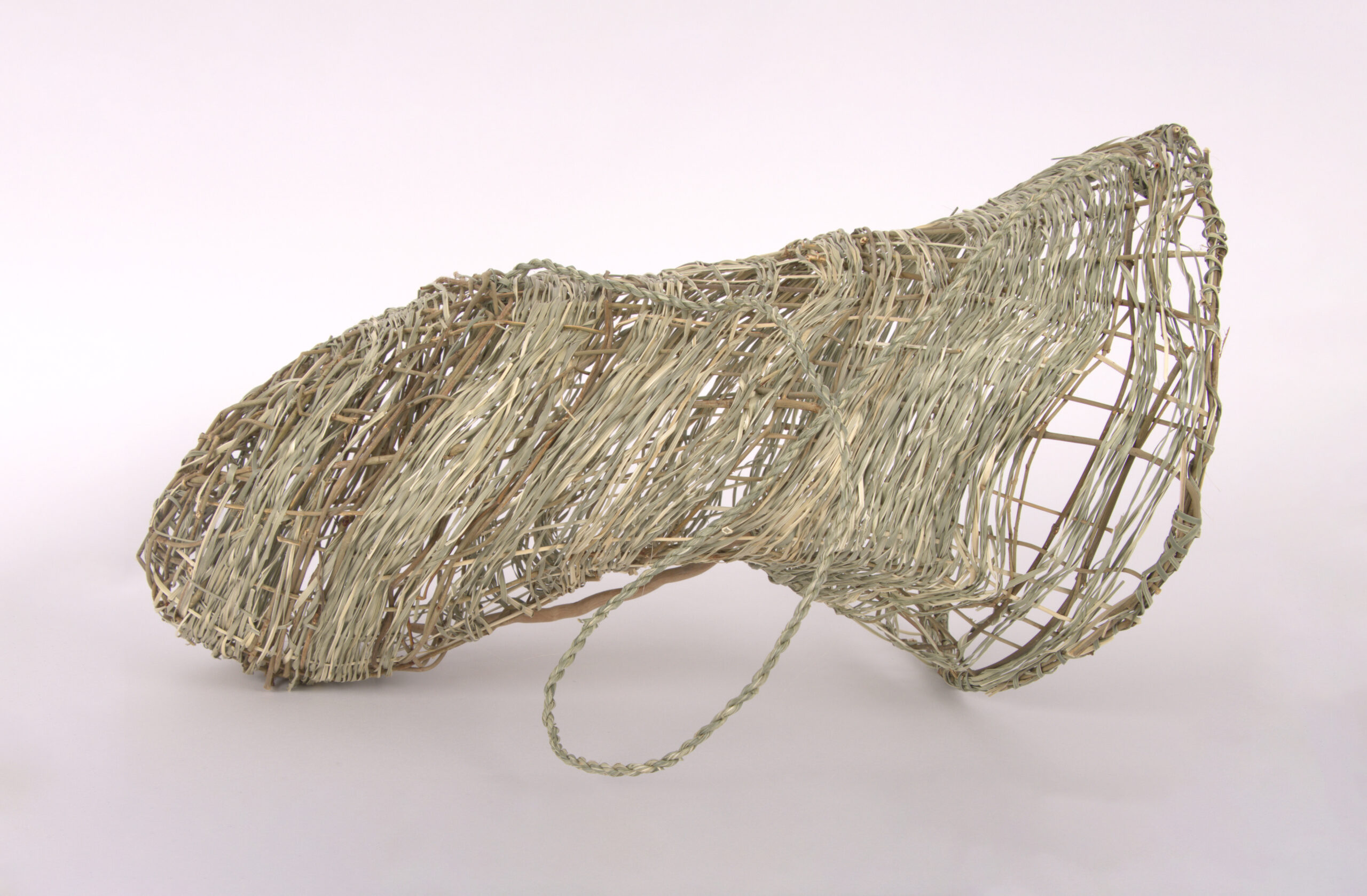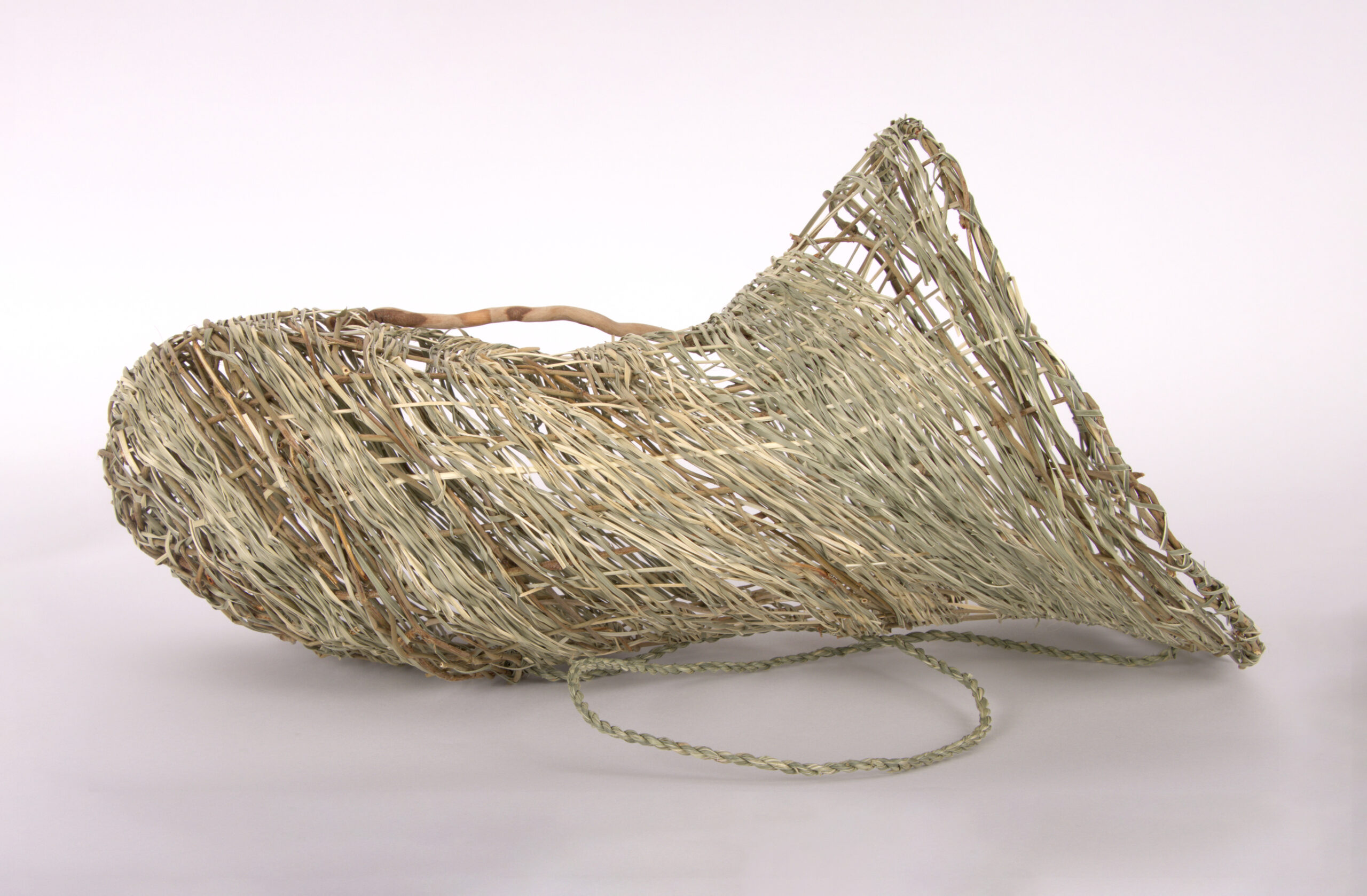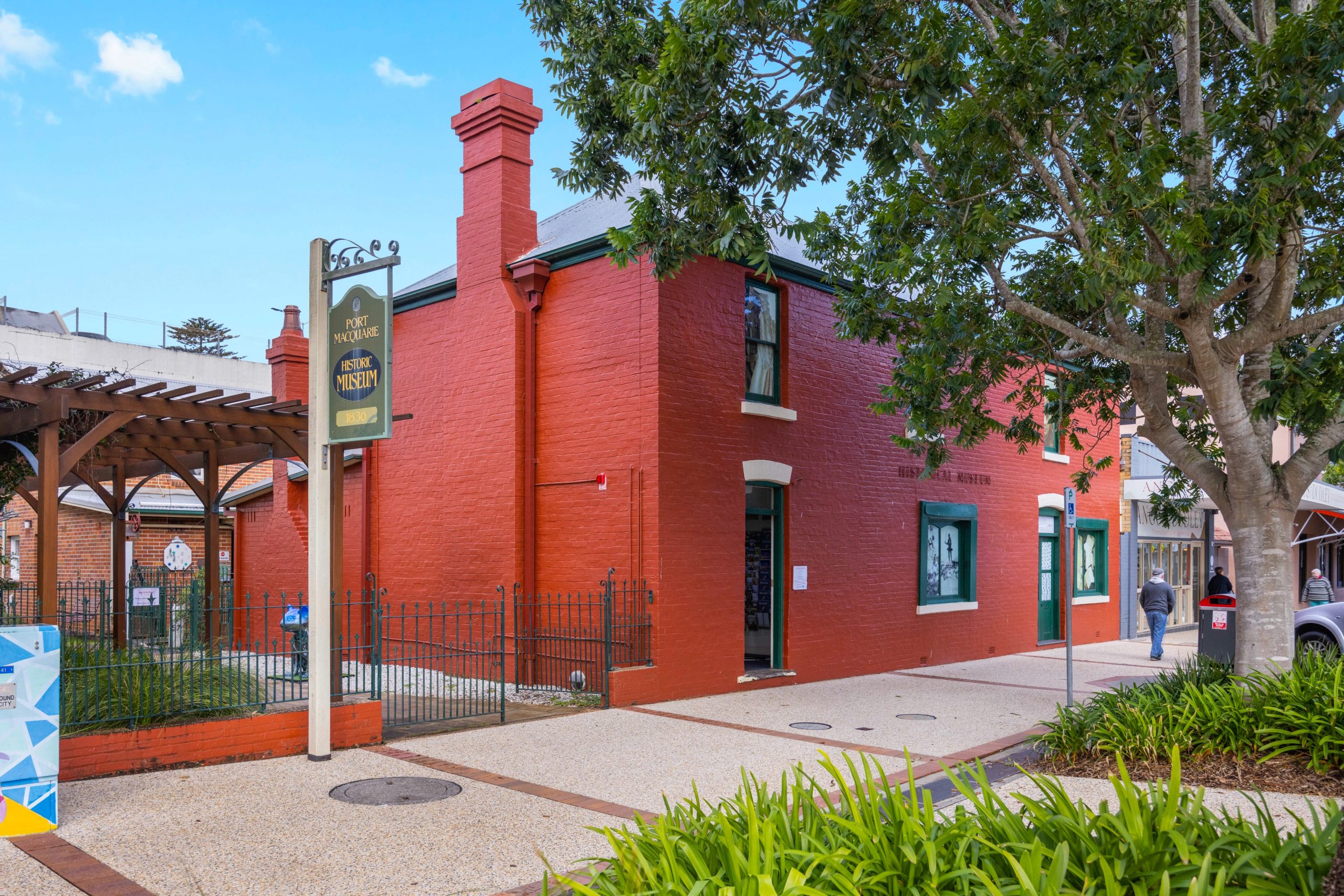Barayal Bila (River Song)
Weaving Together Stories on Birpai Country
This weaving work Buna Fishtrap (fishtrap for beach) was handcrafted by Patricia (Trish) McInherny in 2024 using natural resources collected and gathered on Birpai Country, including invasive vine and native Lomandra (mat rushes). The techniques of random patterns and string weaving produce a strong vessel, used traditionally to catch and contain small bait fish. The weaving is housed and cared for at the Port Macquarie Museum.
Trish wove the fish trap as part of the Barayal Bila (River Song) project, which resulted from a partnership between the Port Macquarie and Powerhouse museums, Trish, and Birpai poet Aunty Rhonda Radley. Aunty Rhonda’s poem Blackmans Point Yarn was produced as a video during the project and can also be seen here on the Storyplace website.
Curator at the Port Macquarie Debbie Somers worked with Trish and Rhonda on the project. It culminated in the Port Macquarie Museum’s inaugural First Nation’s led exhibition – also titled Barayal Bila – which has established a new cultural exchange relationship between the museum, Trish, Aunty Rhonda and the wider Port Macquarie community.
Barayal Bila is an important project for Trish, Rhonda and the Port Macquarie Museum. ‘The Project created the opportunity for truth telling, sharing cultural knowledge and highlighting the need for us all to Care for Country. This project weaves artforms together to bring to life a story of place, people and the spirit of the Country. Working on the elements of the exhibition with the Museum staff, family and community I felt an overwhelming sense of pride and gratitude for our achievements, dedication and passion to change the narrative to include ancestral knowledge and wisdom. Building the capacity in our community to know and understand our shared history benefits us all’ (Aunty Rhonda Radley 2025).
‘The histories held and shared by Buna Fishtrap and Blackmans Point Yarn invite us to rethink how we engage with and accept the stories told by collection objects. Centring First Nations knowledge provides a deeper connection to the histories and objects that shape us. With Birpai women’s knowledge, the significance of place is understood in ways unconsidered by non-Indigenous historians and storytellers’ (Debbie Sommers, 2025).


